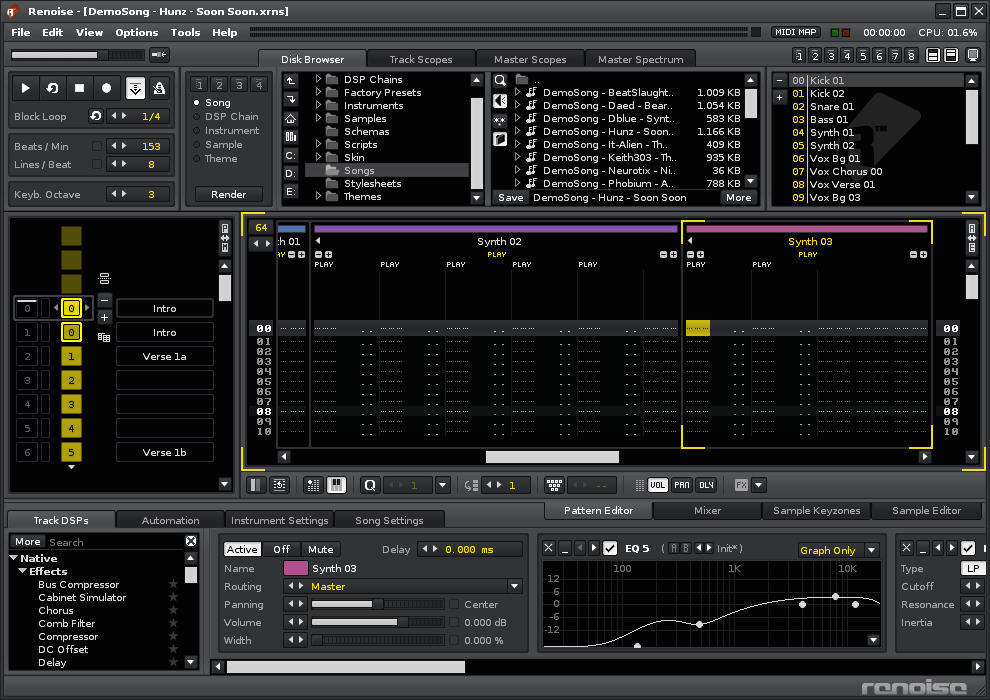


If you want the cursor to advance to the right instead, hold "Left Shift" while entering the values. When recording an effect column value, the cursor automatically moves down to the next line. If you want the value to be '48', then move the cursor over to the second digit using the arrow keys and press '8' there. For example, if you are at the first digit in the Volume column and press '4', the value will become '40'. Entering a value will place it at that exact digit in the column. Values are entered using the row of numbers above the letters on the keyboard, not the number-pad, which is reserved for quickly switching between instruments in the Instrument Selector.
Renoise volume glide manual#
You may find it useful to watch our 9-part "Effect Commands" video series, which provides explanations and demonstrations on this subject.Įffect Commands are recorded in Edit Mode with the Tracker Interface, so if you're unfamiliar with this method of working, you should read through that section of the manual before continuing here. All this can be easily and precisely achieved with Effect Commands. Examples include: starting the playback of a sample from the middle (S effect), then playing it in reverse (B effect), panning it fully to the left (pan column), then retriggering the waveform at its current position (R effect in the pan column) while simultaneously gliding to another note one octave down (G effect). They also allow various direct manipulations of sample audio, which can only be done via Effect Commands and is a major feature that differentiates trackers from other DAWs. 1.5 Effect Commands Quick Reference CardĮffect Commands are used in the Pattern Editor and Phrase Editor to perform a variety of tasks, from changing the volume of a single note, to automating the parameters of Track Effects, or controlling the song during playback.1.3 Entering Multiple Digit Values with the Computer Keyboard.1.2.1.2 Sample Command Variations (Renoise only).1.1 Recording and Editing Effect Commands.


 0 kommentar(er)
0 kommentar(er)
